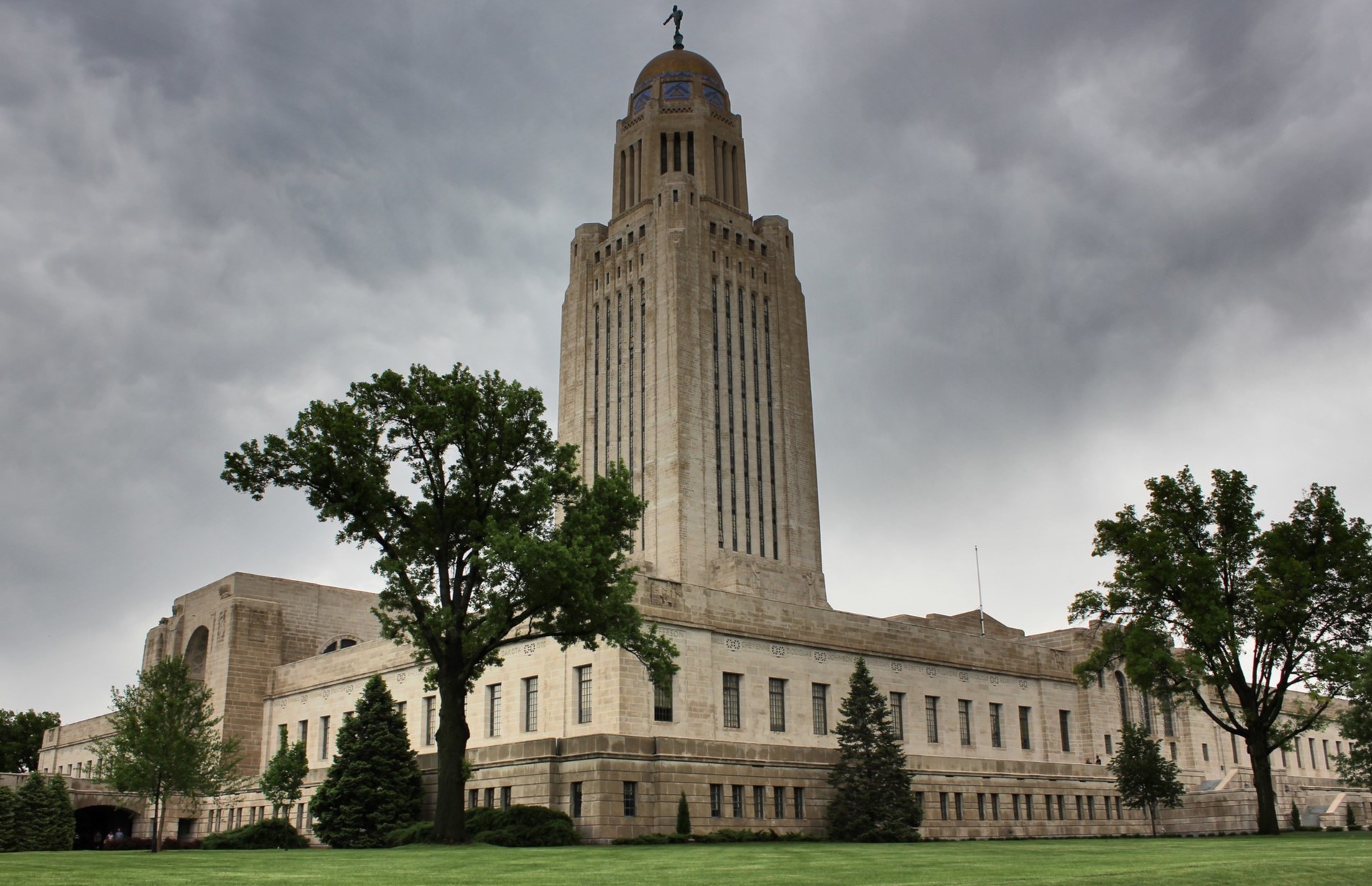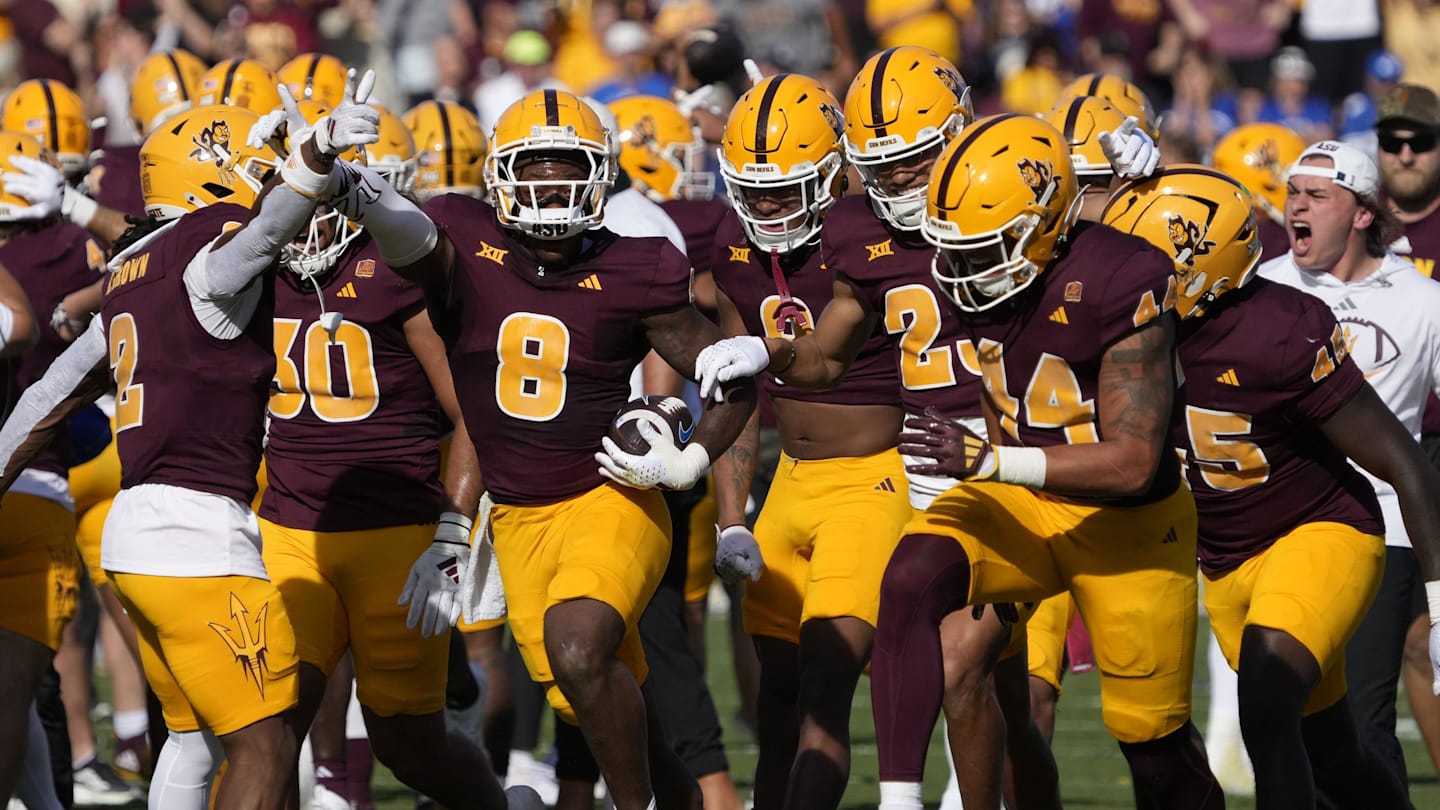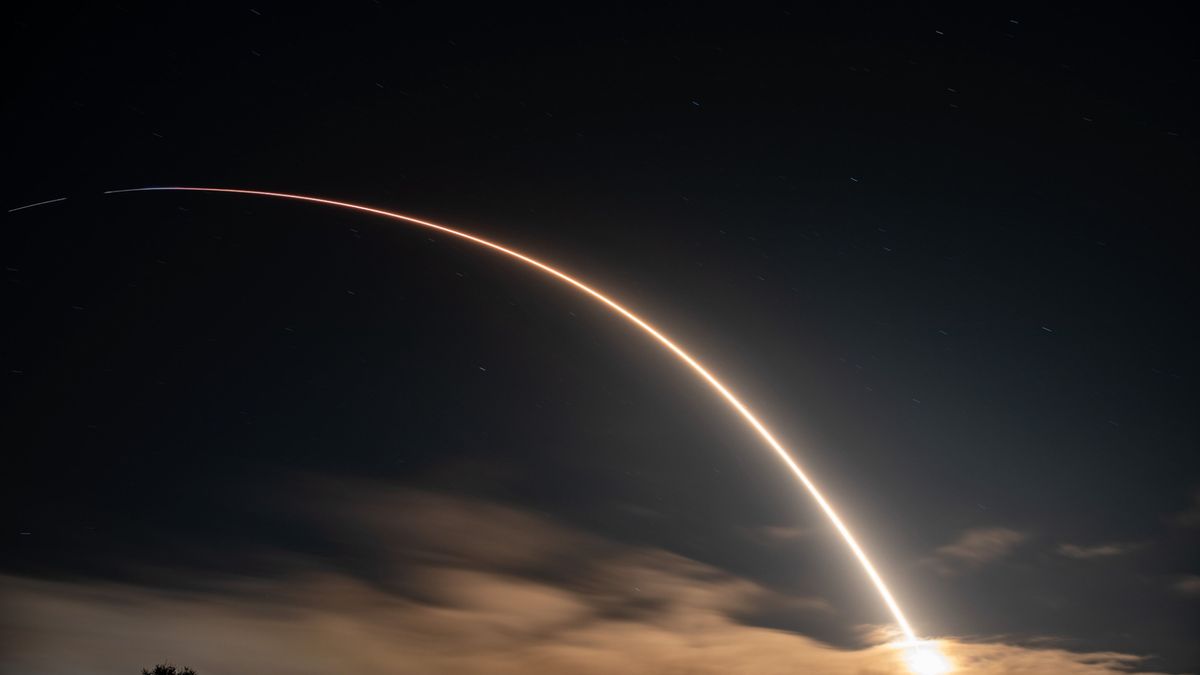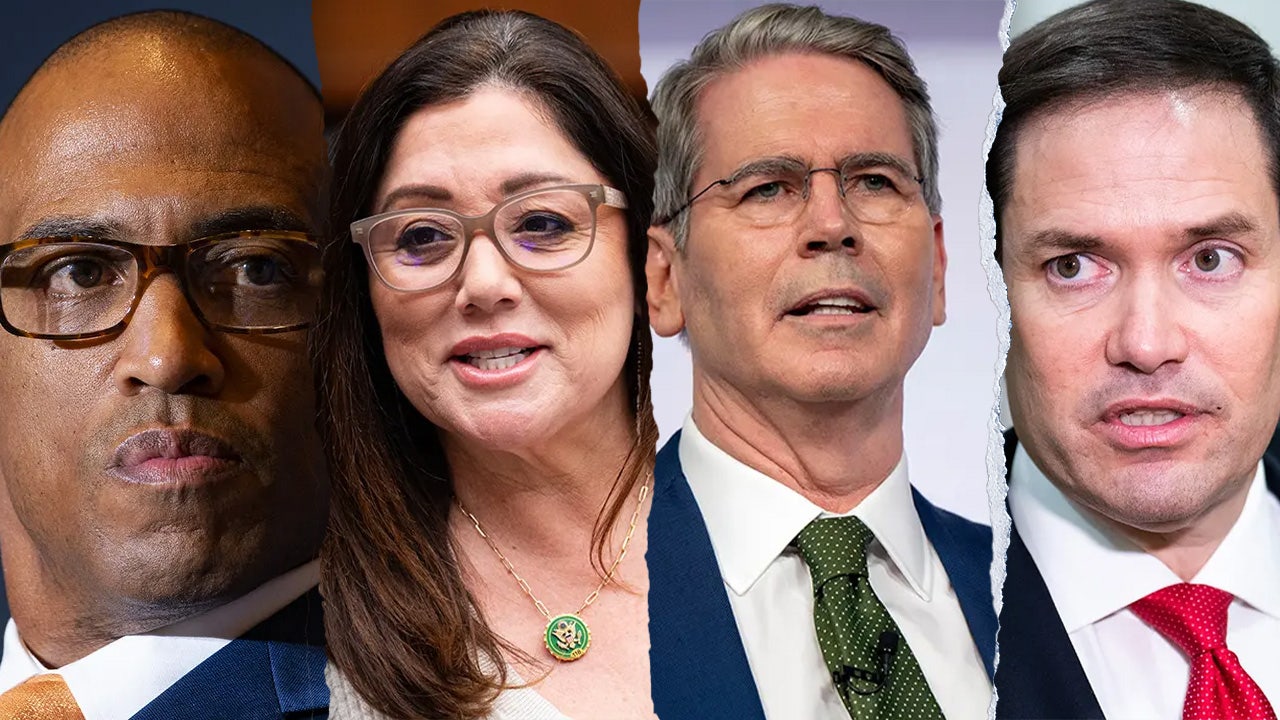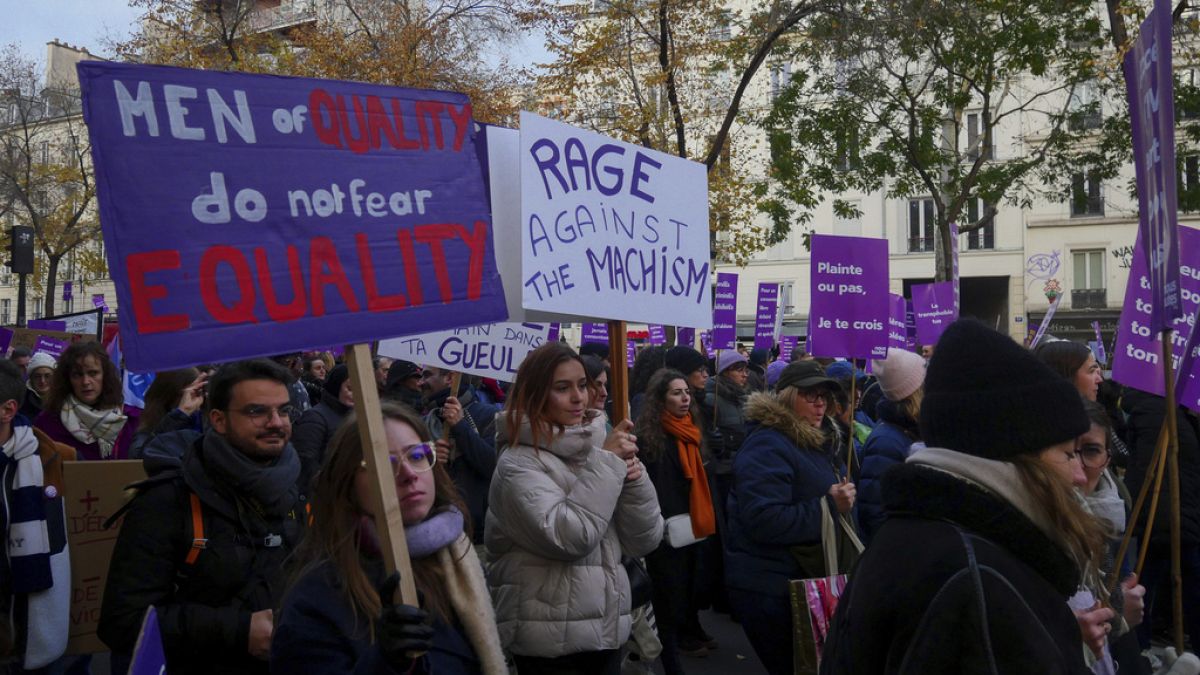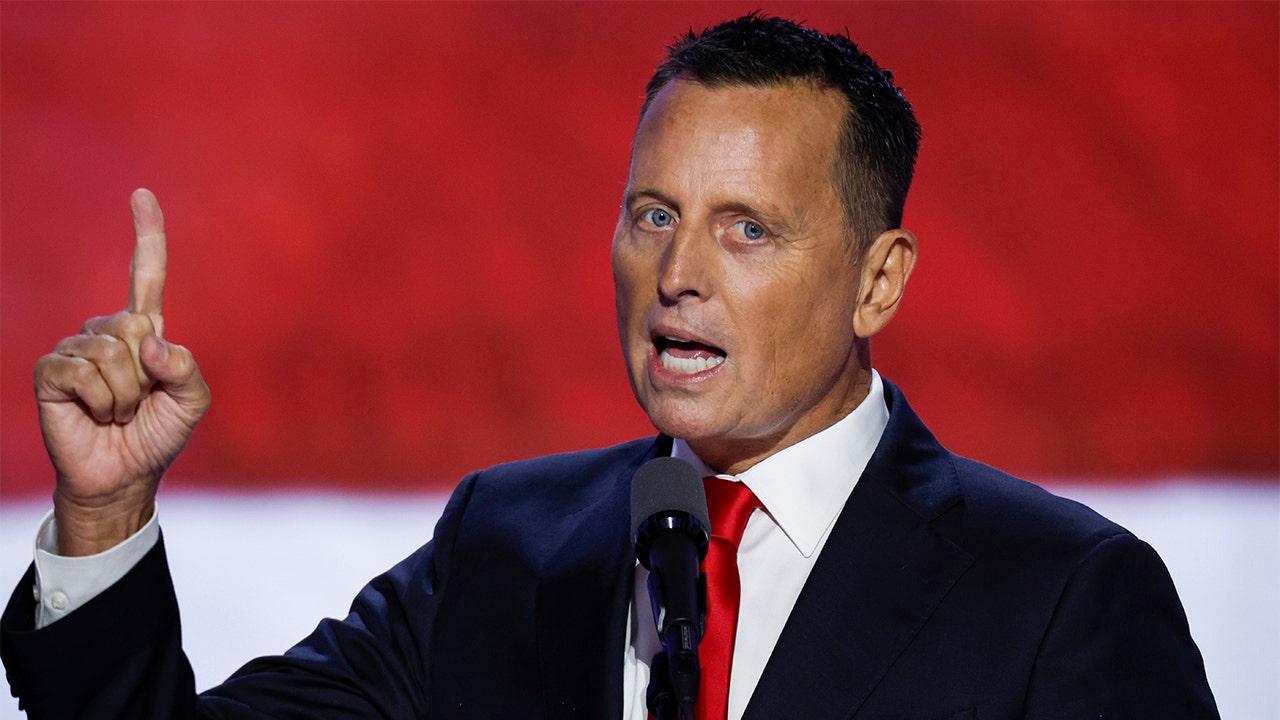Shoppers visiting the CVS Pharmacy at 14th and Irving streets NW in Washington recently must think they traveled back in time to the Soviet Union. The store’s shelves are bare. The refrigerator cases are devoid of food or beverages. When we visited, only sunscreen and greeting cards were on display. But the bizarre scene is not a result of a failed planned economy; rampant theft is the cause. Shoplifters ransacked this CVS over two days early last month, and it hasn’t been restocked since. Weeks later, there’s still hardly anything to buy — or steal.
Washington, D.C
Opinion | How do you fight shoplifting? Not by locking down everything in CVS.

The CVS at 14th and Irving symbolizes extreme retail theft and the harms it can engender. Distressing and inconvenient to ordinary people, threatening to businesses and livelihoods, and repellent to tourists, unchecked shoplifting can corrode a community’s spirit.
It’s happening in the nation’s capital. The D.C. police department does not track shoplifting specifically but reports that theft in general is up 22 percent over last year. It is harder and harder to find a grocery or pharmacy in the District that doesn’t lock up laundry detergent, toilet paper and deodorant. A Giant in Southeast no longer even stocks certain name-brand health and beauty products that thieves target. A liquor store downtown is closing because of constant shoplifting. The H Street Walmart shuttered earlier this year. (The company said the store “hasn’t performed as well as we hoped.”)
The District ranks behind all but one state for retail theft, according to a new Forbes Advisor survey of small businesses. The situation in D.C. is emblematic of a national experience. The National Retail Federation recently reported a “dramatic jump” in stores’ financial losses between 2021 and 2022 — from $93.9 billion to $112.1 billion.
The best new impartial look at shoplifting trends is a recent report by the nonpartisan Council on Criminal Justice. The CCJ’s innovative methodology analyzed police records in 24 cities that track retail theft closely and found a mixed but troubling picture. As of mid-June, New York and Los Angeles saw surges of more than 60 percent compared with 2019, while the phenomenon has ebbed elsewhere.
To be sure, some theft has always been a cost of doing business for retailers. Kids grab the occasional candy bar; desperate parents sneak out with some extra diapers; workers swipe items during delivery and stocking. This is why many places in the United States, including D.C., make stealing less than $1,000 worth of goods a misdemeanor, not a felony.
What appears different now is the prevalence of organized, flagrant shoplifting — thieves sweep goods off shelves and resell them online or on the street. A new federal law, the Inform Consumers Act, requires online marketplaces to better track where third-party sellers get their merchandise. (One such marketplace, Amazon, was founded by Post owner Jeff Bezos; interim Post CEO Patty Stonesifer is on Amazon’s board.) But the law took effect only in June so it’s too soon to gauge its impact.
D.C. lacked sufficient data to be included in the CCJ report. That need for more granular data is the first thing the city and others like it should address. Mayor Muriel E. Bowser (D) has proposed a new felony of “directing organized retail theft” with a penalty of up to 15 years in prison. It’s smart to target ringleaders. Ms. Bowser has also proposed that prosecutors be allowed to charge thieves with a felony if they steal 10 or more times in a 30-day period. It’s another wise deterrent.
A better legal framework won’t help much if it’s not aggressively enforced, though. We heard from a Columbia Heights shopper who witnessed a mass shoplifting and emailed CVS corporate headquarters about it. A regional manager responded that the problem was that police do not pursue cases when CVS reports them. (A CVS spokesperson declined to comment.) Meanwhile, D.C. Police Chief Pamela A. Smith keeps telling stores they have to report the theft. Police data shows only five reports of theft in the past two months on the Columbia Heights block where CVS stands. Even if police do make an arrest, it often does not lead to prosecution. The District’s U.S. attorney, Matthew M. Graves, declined to prosecute 56 percent of cases in the past fiscal year, an unusually high number relative to other cities’.
Seattle, one of the cities where CCJ found that shoplifting is lower now than it was five years ago, offers a good model. The city identified more than 160 “high utilizers” responsible for the vast majority of recent misdemeanors such as shoplifting. Police were able to put these individuals in jail when they were caught. To deter others, Seattle police conduct surprise one-day crackdowns that lead to about 50 arrests each. “The strongest predictor to reduced criminal behavior is the belief they will get caught,” said Ernesto Lopez, lead author of the Council on Criminal Justice’s shoplifting report. Occasional, but unpredictable, bursts of strict enforcement can deter shoplifters at minimal cost to police.
The District and other cities need to get smarter about how they attack this crime. Otherwise, even more retail stores might find themselves going back to the U.S.S.R.

Washington, D.C
New mural dedicated to DC’s ‘Mayor for Life’ honors career, contributions of Marion Barry – WTOP News
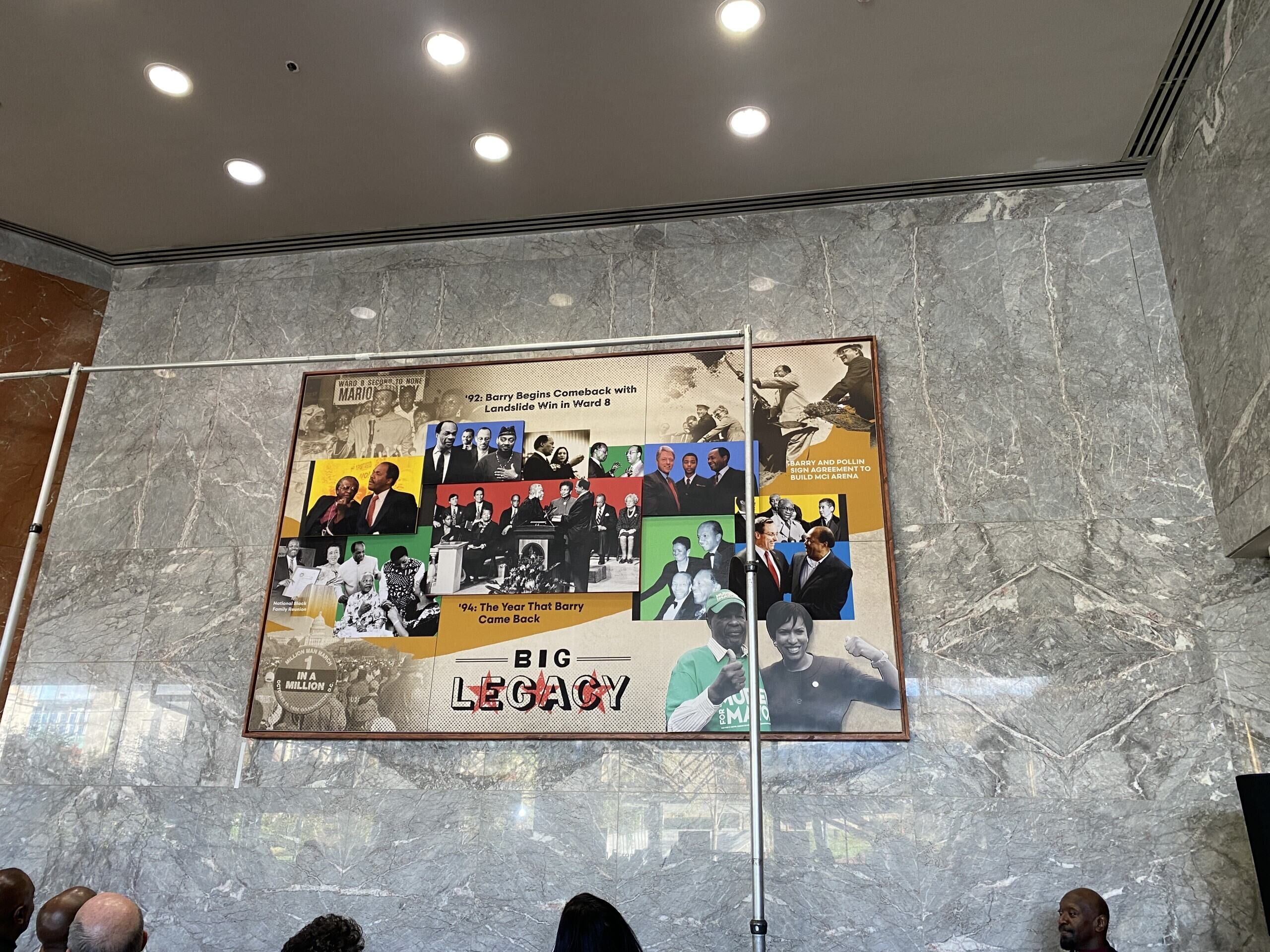
Ten years to the day after his death, D.C. leaders honored the life of the late Mayor Marion Barry with a new mural hanging in his namesake building.
(WTOP/Luke Lukert)
WTOP/Luke Lukert
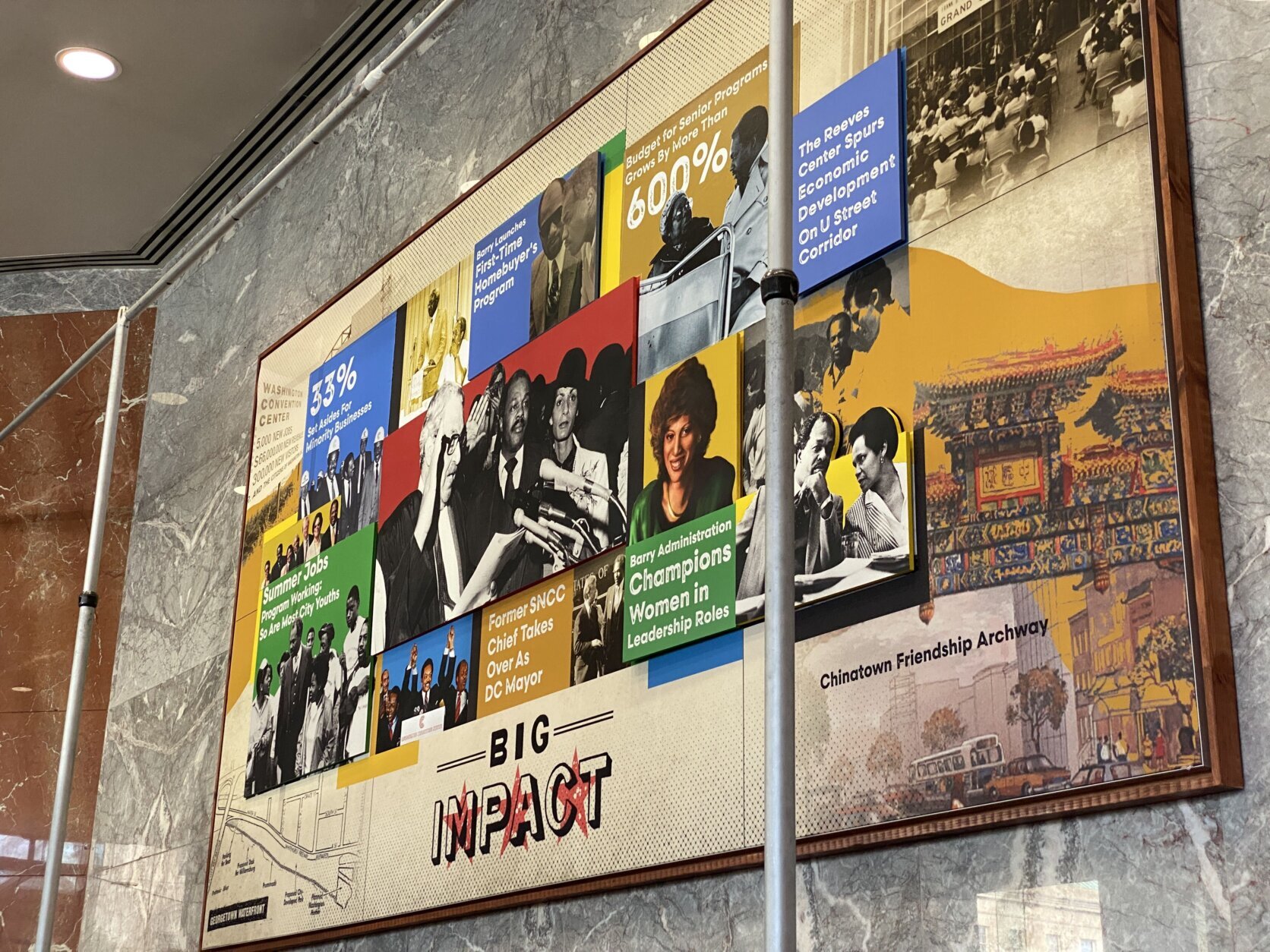
(WTOP/Luke Lukert)
WTOP/Luke Lukert
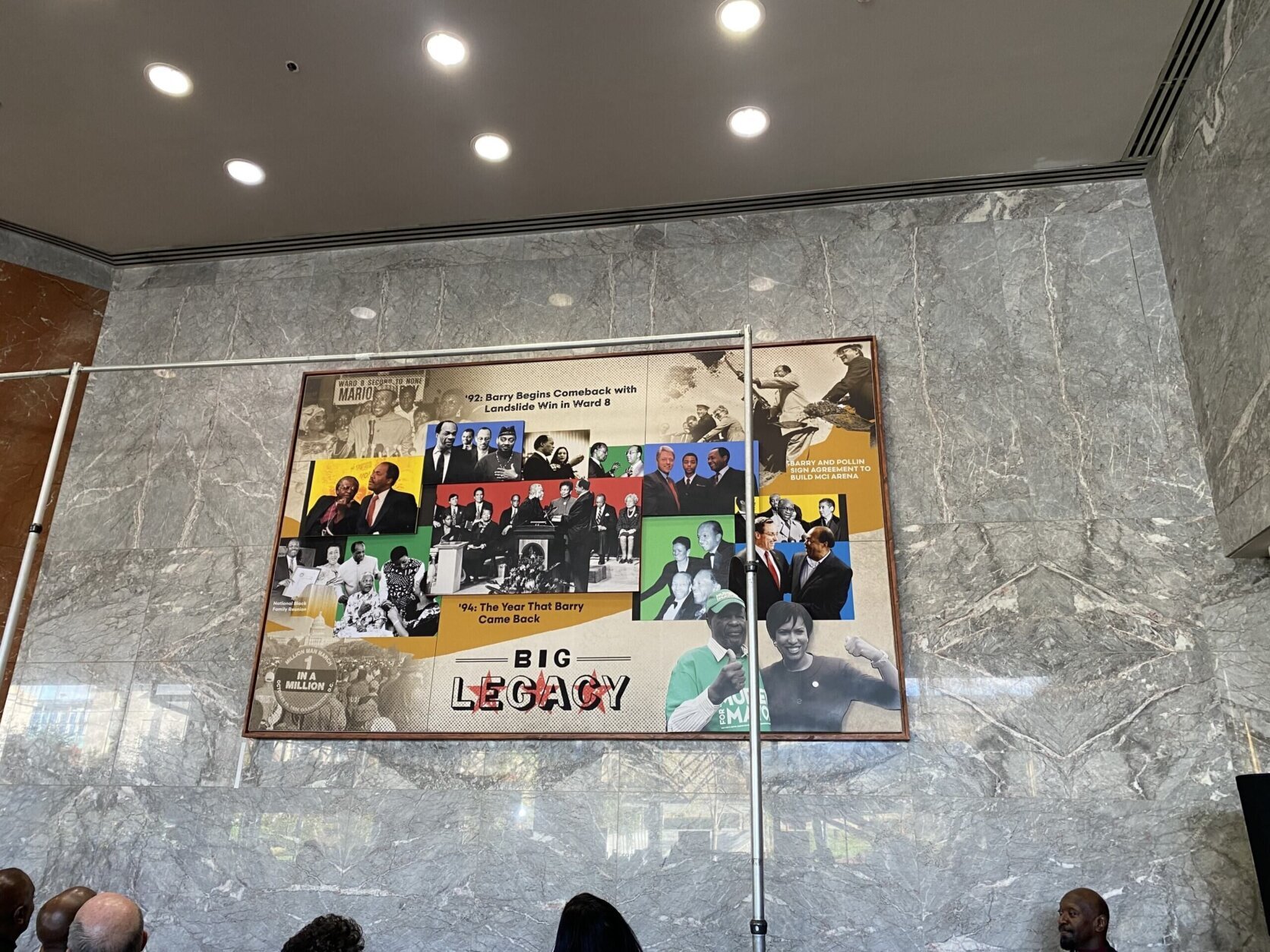
(WTOP/Luke Lukert)
WTOP/Luke Lukert
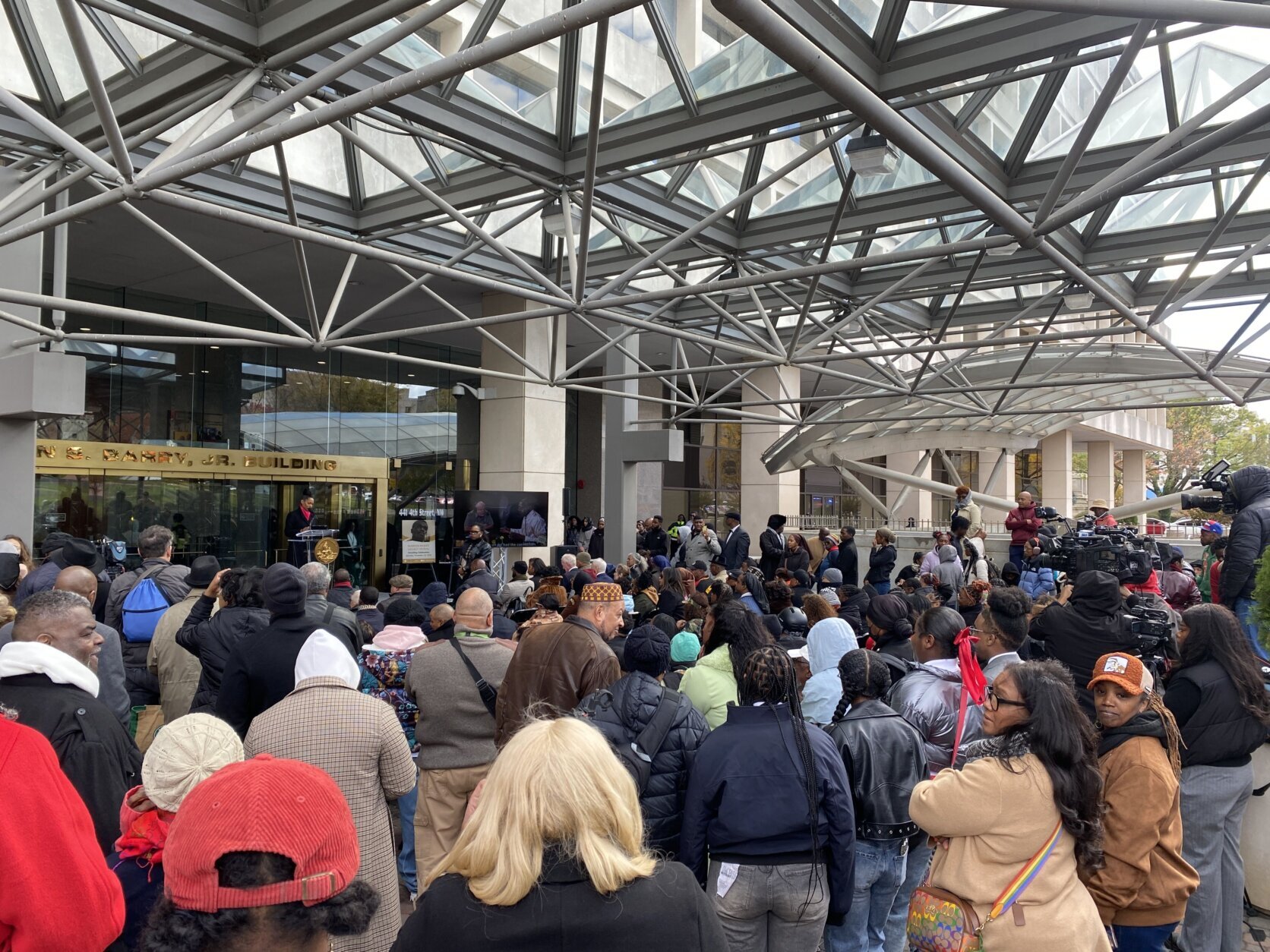
(WTOP/Luke Lukert)
WTOP/Luke Lukert
Ten years to the day after his death, D.C. leaders honored the life of the late Mayor Marion Barry with a new mural hanging in his namesake building.
Mayor Muriel Bowser joined the former D.C. First Lady at the Marion S. Barry, Jr. Building in Judiciary Square on Saturday to pull the curtain down, revealing the new mural dedicated to the “Mayor for Life.”
“My husband really loved Washington, DC and its residents. The mural captures some of the major contributions he made to the City, and some of the people who worked with him to help build the City and empower its residents,” said Cora Masters Barry, Barry’s widow, in a statement.
“I was thrilled that so many residents and visitors were able to join us on this inspirational, entertaining, educational, and historical day, as we honored a man, Marion Barry Jr., whose legacy and love of this city was so deep and strong.”
The mural is broken into three parts, each with a different title and focusing on a different aspect of Barry’s life.
The first panel, titled “Big Vision,” displays Barry’s early years as a civil rights activist and his transition into politics.
The center panel, “Big Impact,” then focuses on his time in office as a Councilmember and four term mayor.
These sections emphasize Barry’s support for Black-owned businesses, summer jobs for youth, programs for seniors and leadership opportunities for women.
The last section of the mural is titled ”Big Legacy.” It highlights the influence Barry still has on the city — showcasing advocacy against apartheid, support for the Million Man March, contributions to the development of the MCI Center, and his work with the DC Control Board.
The many pictures show Barry beside the likes of President Bill Clinton, Nelson Mandela and Martin Luther King Jr.
Another focus of this panel is Barry’s political comeback after a high-profile arrest and conviction on crack cocaine possession charges in 1990. Four years later, he returned to the Mayor’s office after a commanding primary run.
“He told me a lot of things, and he taught us a lot of things, but one of the biggest ones was if you get knocked down, you get back up,” said Mayor Muriel Bowser at the unveiling.
Nabeeh Bilal, an artist based in Ward 8, created the mural.
“You’ll notice that there is not a single solo image of Marion Barry, and that’s because, with his accomplishments and achievements, it was always about others,” Bilal said.
Get breaking news and daily headlines delivered to your email inbox by signing up here.
© 2024 WTOP. All Rights Reserved. This website is not intended for users located within the European Economic Area.
Washington, D.C
Skull of St. Thomas Aquinas to Visit Washington, DC, On International Tour

Friday’s event will begin with a solemn Mass celebrated by Cardinal Wilton Gregory, archbishop of Washington, followed by an opportunity to venerate the relics.
The major relics of St. Thomas Aquinas, “The Angelic Doctor,” are on tour and scheduled to make a stop in Washington, D.C., next weekend as part of the commemoration of the 700th anniversary of his canonization.
Members of the faithful will be able to venerate the relics, including his skull, on two separate occasions: first at St. Dominic’s Church on Friday, Nov. 29, and then again on Saturday, Nov. 30, at the Dominican House of Studies. The event is co-sponsored by the Thomistic Institute.
“In a time of renewed interest in the teaching of St. Thomas Aquinas, the jubilees of his canonization (700 years in 2023), death (750 years in 2024), and birth (800 years in 2025) draw our attention to the masterwork of wisdom and sanctity which God wrought in him,” Dominican Father Gregory Pine, assistant director at the Thomistic Institute, said in a press release.
“The opportunity that we have to receive and venerate his relics makes this grace all the more proximate and precious to us,” Father Pine added.
Friday’s event will begin at 12:10 p.m. with a solemn Mass celebrated by Cardinal Wilton Gregory, archbishop of Washington, followed by an opportunity to venerate the relics of the revered theologian and philosopher from 1 p.m. to 7 p.m. There will also be solemn vespers at 5:30 p.m. and night prayer at 6:45 p.m. with a Marian procession to follow.
On Saturday, the Dominican House of Studies will begin the day with solemn lauds and a votive Mass of St. Thomas Aquinas at 7:30 a.m., and veneration of the relics will take place from 8:30 a.m. to 5 p.m. Pine will also preach at 3 p.m. that day.
“‘Get wisdom, get understanding’ (Prv 4:5). One way is to study, another way is to pray for it, but an exceptional way is to pray for it in the presence of the skull of St. Thomas Aquinas,” Dominican Father James Brent, an assistant professor of philosophy at the Dominican House of Studies, also stated in the release.
The relic of St. Thomas Aquinas’ skull comes to the U.S. from the Dominicans in Toulouse, France, and is one of two skulls Church officials claim to have belonged to the 11th-century saint. The other is housed in the Italian city of Priverno. The Dominicans in France commissioned a new reliquary for the skull last year to celebrate the saint’s canonization anniversary.
After Aquinas’ death in 1274, his body was kept in Fossanova Abbey in Priverno until 1369, when his relics were moved to Toulouse, a city in southwestern France, where the Order of Preachers was established. Aquinas’ tomb rests in the Church of the Jacobins.
Researchers are currently weighing the possibility of conducting an in-depth forensic analysis of both skulls to determine their authenticity.
Where do the relics go next?
After two stops in Washington, D.C., on Nov. 29 and Nov. 30, Aquinas’ relics hit the road for their U.S. tour:
Charlottesville, Virginia: St. Thomas Aquinas on Dec. 2
Providence, Rhode Island: Providence College on Dec. 4
Cincinnati: St. Gertrude Priory on Dec. 6
Columbus, Ohio: St. Patrick Priory on Dec. 7–8
Louisville, Kentucky: St. Louis Bertrand on Dec. 10
Springfield, Kentucky: St. Rose Priory on Dec. 12
New York City: St. Vincent Ferrer on Dec. 14
Philadelphia: St. Patrick on Dec. 16
Baltimore: Sts. Philip and James on Dec. 18
Washington, D.C
DC brothers freed after wrongful murder convictions seek presidential pardon

Two brothers who spent decades in prison after being convicted of a 1984 murder in Washington, D.C., they say they did not commit, are seeking a presidential pardon.
Charles and Chris Turner were convicted as teenagers for the killing of Catherine Fuller in Northeast Washington, D.C. near the intersection of 8th and H Street, Fox 5 DC reported.
They have since been released and are fighting for a pardon that would help restore their rights.
“With the pardon, we get a chance to fix all that and bring a closure to this case once and for all,” Chris Turner told Fox 5 DC.
TWO TEENS ARRESTED IN CONNECTION WITH ROBBERY THAT LEFT BELOVED DC DJ DEAD: ‘WE WILL HOLD YOU ACCOUNTABLE’
Charles and Chris Turner were convicted as teenagers for the killing of Catherine Fuller in Northeast Washington, D.C. near the intersection of 8th and H Street. (iStock)
After decades in custody for a crime which they did not commit, the brothers maintain a positive view on the future and the impact they can have moving forward, stressing that they will not allow their case to mentally hold them back.
“People get upset more that we’re not bitter,” Chris Turner said. “We think if you remain bitter, remain upset about what occurred – even though it was an atrocity and it was injustice – that you stay locked up mentally.”
The case revealed allegations of suppressed evidence, coerced testimony and investigative errors.
Seventeen people were arrested in connection with Fuller’s murder, with eight ultimately convicted, according to Fox 5 DC. The six who are still alive all maintain their innocence after collectively serving more than 200 years behind bars.
HEAD OF DC PRESCHOOL ARRESTED AFTER DIRECTING UNDERCOVER OFFICER ‘TO ABUSE HIS CHILD,’ JUSTICE DEPARTMENT SAYS

The Turner brothers have become involved in their community and remain hopeful about their futures, although limitations in areas such as career prospects remain due to their felony records.
“We’ve actually said we might join the police force if we didn’t have this on our record … I used to want to be in the Navy. I can’t serve my country because I have a record,” Charles Turner said.
The brothers’ fight for a pardon represents a crucial step in restoring their reputation and rights lost in the convictions.
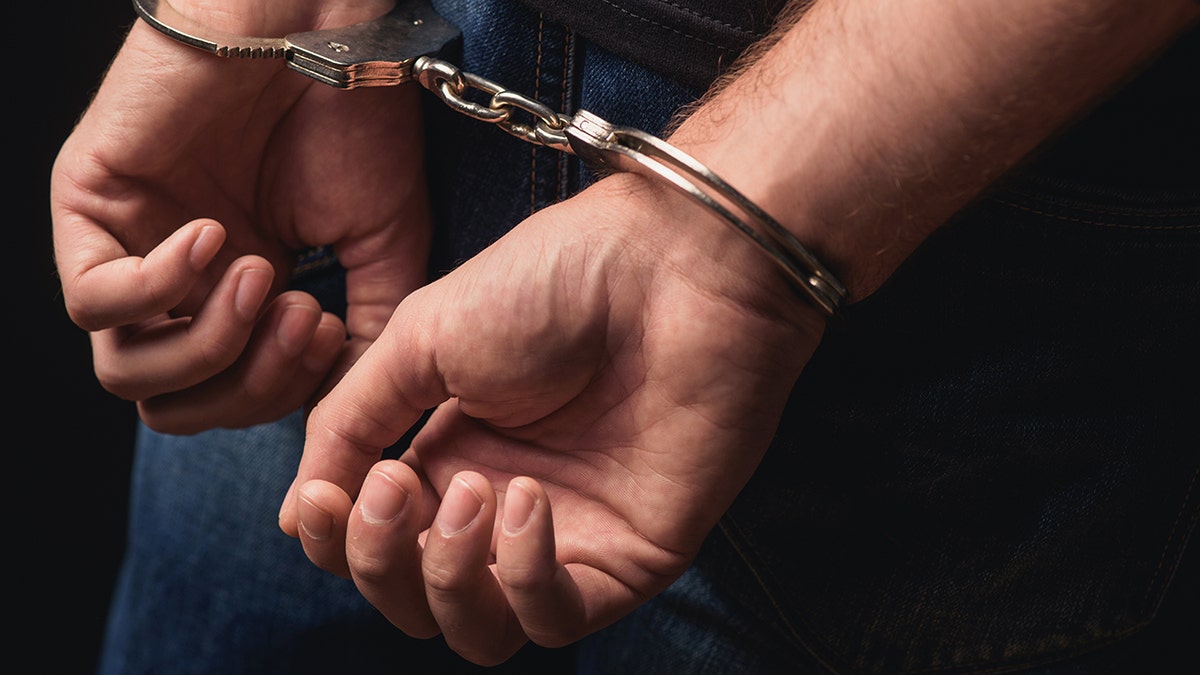
The case revealed allegations of suppressed evidence, coerced testimony and investigative errors. (iStock)
CLICK HERE TO GET THE FOX NEWS APP
Charles Turner said he believes a pardon would bring validation to himself and the other five convicted men, as well as to his family, friends and others who have supported him.
“It would also validate – help to validate – what they know, not what they believe, but what they know. There’s a big difference there,” he said.
Most presidential pardons have been granted between Election Day and Inauguration Day.
-

 Business1 week ago
Business1 week agoColumn: Molly White's message for journalists going freelance — be ready for the pitfalls
-

 Science4 days ago
Science4 days agoTrump nominates Dr. Oz to head Medicare and Medicaid and help take on 'illness industrial complex'
-

 Politics6 days ago
Politics6 days agoTrump taps FCC member Brendan Carr to lead agency: 'Warrior for Free Speech'
-
/cdn.vox-cdn.com/uploads/chorus_asset/file/25739950/247386_Elon_Musk_Open_AI_CVirginia.jpg)
/cdn.vox-cdn.com/uploads/chorus_asset/file/25739950/247386_Elon_Musk_Open_AI_CVirginia.jpg) Technology6 days ago
Technology6 days agoInside Elon Musk’s messy breakup with OpenAI
-

 Lifestyle6 days ago
Lifestyle6 days agoSome in the U.S. farm industry are alarmed by Trump's embrace of RFK Jr. and tariffs
-

 World6 days ago
World6 days agoProtesters in Slovakia rally against Robert Fico’s populist government
-

 News6 days ago
News6 days agoThey disagree about a lot, but these singers figure out how to stay in harmony
-

 News6 days ago
News6 days agoGaetz-gate: Navigating the President-elect's most baffling Cabinet pick



